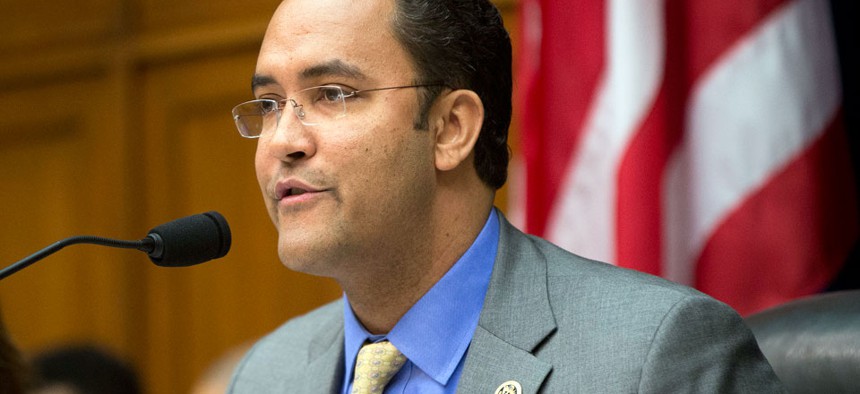Congressman Wants to Curb Copycat IT Systems at DHS

House Information Technology subcommittee Chairman Rep. Will Hurd, R-Texas Pablo Martinez Monsivais/AP
The DHS IT Duplication Reduction Act, introduced last week, would require the DHS chief information officer to report to Congress on plans for reducing duplicative IT systems.
Freshman House Republican lawmaker Will Hurd thinks there are too many duplicative IT systems at the Department of Homeland Security and wants agency officials to come up with a plan for curb them.
The DHS IT Duplication Reduction Act, introduced last week, would require the DHS chief information officer to report to Congress on all IT systems operated by the department’s 22 components, pinpoint the duplicative systems and come up with a strategy for reducing them.
The legislation will help curb “a ridiculous waste of taxpayer dollars,” Hurd said in a statement.
“We have to change the ‘it’s not my money, so let’s spend it’ culture in government that leads to this kind of waste,” he said. “Taxpayers should be able to trust that every tax dollar is being used carefully and thoughtfully on effective, efficient government that works for the people.”
Hurd’s bill would not provide any additional funding to the department to carry out the duplication reviews.
The Government Accountability Office has consistently zeroed in on potential waste and duplication in common back-office support systems and business applications across government, citing hundreds of different human-resource IT systems and financial management systems used by agencies.
However, in a 2012 report, GAO auditors were largely supportive of DHS leaders’ efforts to identify and eliminate duplicative investments, which had produced “tangible” results, the watchdog agency testified before Congress at the time.
Hurd’s was one of six bills introduced last week by members of the House Homeland Security Committee dealing with DHS management. Another bill, the Border Security Technology Accountability Act, introduced by Rep. Martha McSally, R-Ariz., would require IT execs at DHS to certify acquisitions for border-technology are on schedule and meeting cost targets.





